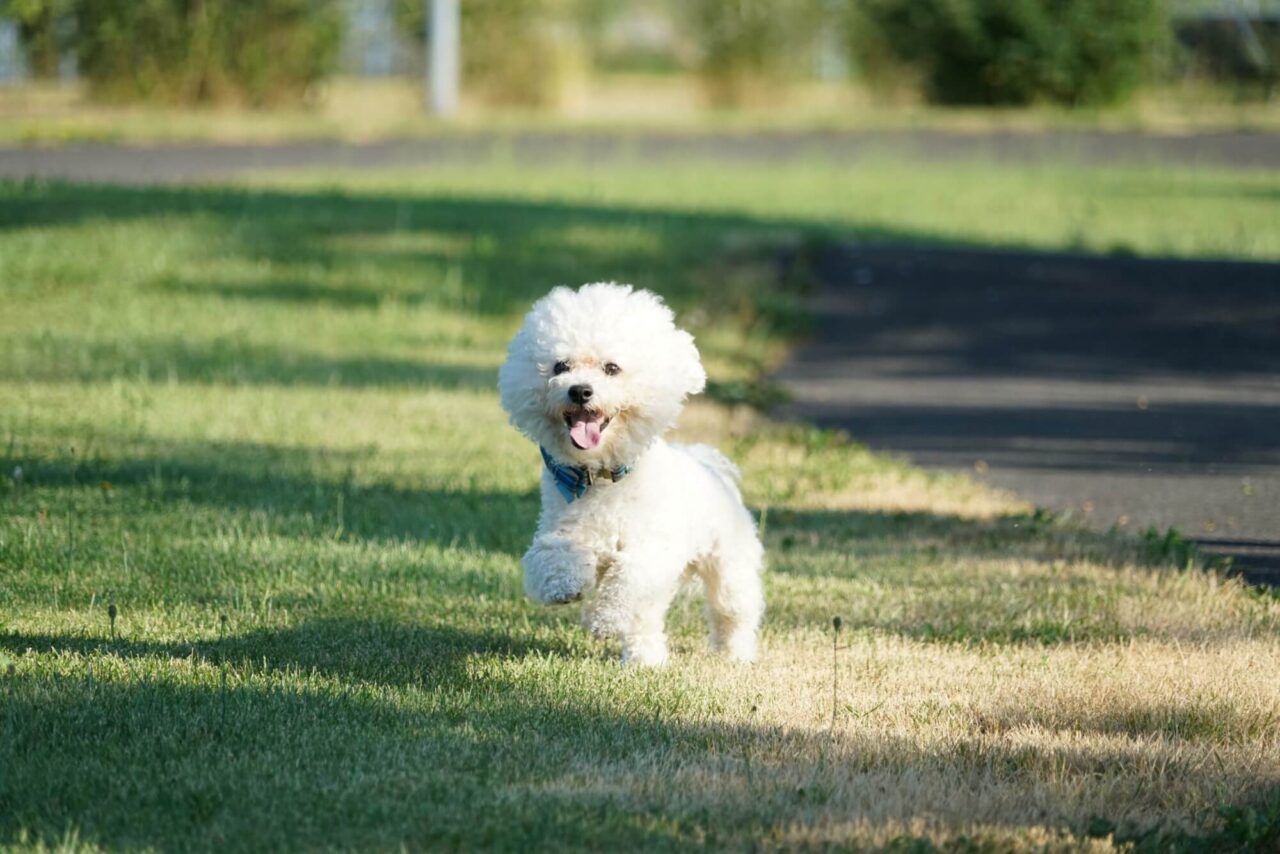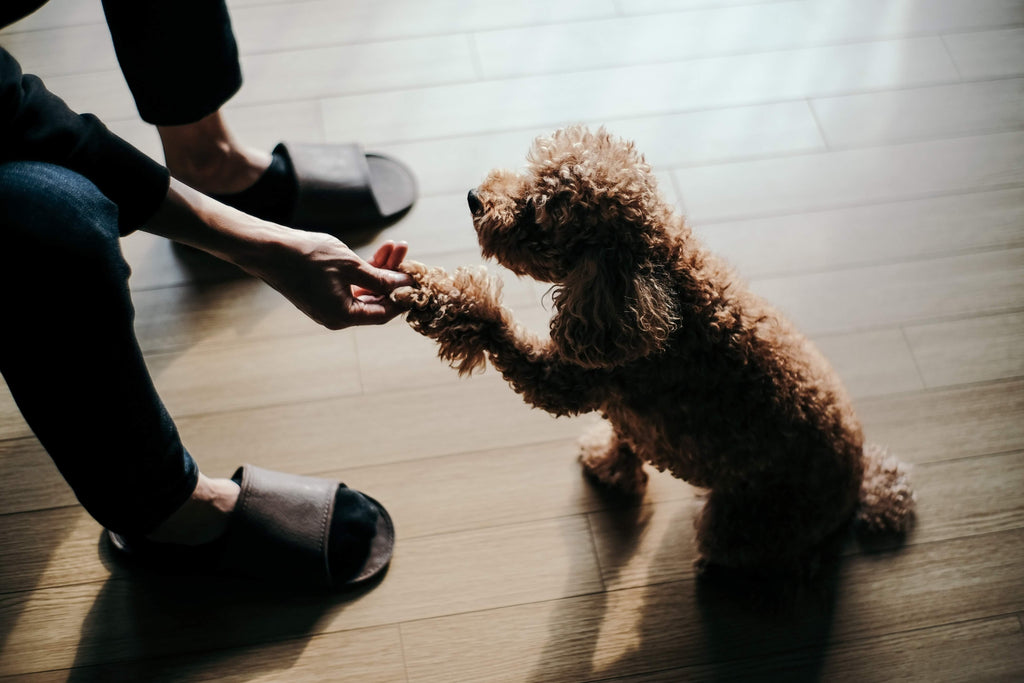
Hypoallergenic Dogs: A Guide to the Best Breeds for Allergy Sufferers
If you're one of the 50 million American allergy sufferers, you're used to annoying triggers. You have to BYOP - Bring Your Own Pillow - when you travel. Springtime time pollen has you popping medication every few hours. You can't wear some types of jewelry from your partner. You may have come to terms with the fact that you may never be able to own a pet. Is that true, though?
Can people with allergies really never become pet owners?
You'll be happy to learn that there actually are hypoallergenic dogs. While they may not be 100% hypoallergenic, some breeds may be less likely to cause reactions in people with “dog fur sensitivities.” These breeds may not produce as many allergens, making them perfect for people with allergies.
Keep reading to find our list of the best hypoallergenic dogs to add to your family.
Bichon Frise
The Bichon Frise is a gentle and playful dog that thrives on activity. They have a soft and curly coat that works to catch all the dust and dander that accumulates. This coat characteristic makes them an excellent fit for people with allergies. A Bichon Frise dog sheds their coat less than many breeds. If lingering pet hair triggers your allergies, this might be the perfect breed for you. Since they don't shed their coat, you'll have to be a stickler for grooming. Brush their hair often and make sure they're getting frequent baths and haircuts. It's essential to stay on top of their coat care and grooming to prevent mats.
Samoyed
Samoyeds are a beautiful breed known for their high energy personality and fluffy white coats. Unlike Bichon Frise, this breed does shed its hair. If your allergies get worse with lingering pet hair, Samoyeds may not be right for you. It's worth noting, though, that their dander levels are lower in comparison to other breeds. Samoyeds don't drool much, either, making them one of the more popular larger hypoallergenic breeds.
Xoloitzcuintli
Don't let this mouth full of a breed name turn you off from adding a Xoloitzcuintli to your family. These pooches are otherwise known as Xolos or Mexican hairless dogs. As you can probably guess by that last nickname, Xoloitzcuintlis often have little to no hair. There are three Xolo size options - toy, mini, and standard. You can also find them in varieties that have beautiful coats. But opt for the hairless variety if you're searching for a hypoallergenic breed. Though Xolos are hardier than other hairless dog breeds, you still need to take care of their skin. Bathe your pooch with a gentle shampoo and keep their skin moisturized. If you spend a lot of time outdoors, they'll need protection from extreme temperatures and sunlight.
Chinese Crested
The unique-looking Chinese Crested breed is one of the most popular hypoallergenic dog breeds. They come in two types - hairless or “powderpuff.” The hairless variety is mostly hair-free with small tufts on their heads, tails, and feet. Since they don't have coats, shedding is non-existent. Powderpuffs need daily brushings to stay clean and comfortable to pet. The undercoat of the powderpuff variety is shorter, while the outer coat acts as a veil overlay. This unique coat composition makes brushing Chinese Crested dogs a breeze. 
Schnauzer
Schnauzers are a very loyal and family-friendly dog. They are available in giant or miniature sizes. Giant Schnauzers have wiry coats that don't shed as much as other dogs. You will need to groom them often to keep their coat looking its best. Brush them every week and visit a groomer for occasional clippings and strippings. Miniature Schnauzers have a similar coat to their giant counterparts. It'll need regular grooming to keep its undercoat sheddings from lingering too long.
Basenji
The Basenji is one of the most well-known types of hypoallergenic dogs and one of the easiest to take care of. Have you ever been jealous of cat owners because their pets groom themselves? You'll love the Basenji breed, then! This breed does most of its own cleaning and grooming. This self-grooming can help minimize allergens because they only shed dander about once a month. Basenjis are great at keeping themselves clean and their coat in tip-top shape. Basenjis don't slobber or bark much, either. This means less allergy-causing protein particles being spread throughout your home.
Poodle
All poodle varieties - standard, toy, and miniature - are considered somewhat hypoallergenic. Their curly coat doesn't shed like other dog breeds. It does hold onto dead hair and dander, though, so this breed might be best for people with less severe allergies. Schedule regular groomings to ensure those allergens are kept to a minimum. Learn about different poodle mixes such as the Mini Bernedoodle, Teacup Goldendoodle, Sheepadoodle, or the Whoodle.
Portuguese Water Dog
Like some of the other breeds on our list, Portuguese Water Dogs have a single-coat. They don't have an undercoat that can cause excessive shedding. They do shed a little, as do most animals with hair. It's essential to keep up with a regular coat maintenance program. At the very least, you'll need to brush their fur every day. We recommend brushing outside to cut down on the dander in your household air. Portuguese Water Dogs coats can either be in tight curls or loose waves. You can choose to have your groomer do a lion or retriever clip to control the fur.
Puli
You might take one look at a Puli dog and immediately disregard it. How could a pooch with so much fur be hypoallergenic? The truth is that Puli's can be an excellent choice for people with pet allergies. A Puli’s hair grows naturally in long matted ropes similar in appearance to dreadlocks. This matted fur serves to help protect these dogs from not only the elements but predators as well. Your Puli won't need to face off with bears or wolves in your home, so their mats are just an aesthetic element. Pulis have both under and overcoats that work together to create the fur ropes. As a pet owner, you'll need to separate the mats into smaller ones as part of your grooming schedule. Regular brushing and bathing need to be done on an infrequent basis.
How to Live in Harmony With Hypoallergenic Dogs
If you've found a breed that doesn't trigger your allergies, great! If the pooch you've fallen in love with causes allergy flare-ups, it's not impossible to coexist. Here are some helpful tips to help you live in harmony.
Dander Removal
Dander is microscopic flakes of skin that come off of animals with fur or feathers. If it's your dog's dander that triggers your allergies, try bathing him more often. Frequent baths will also remove other potential allergens that may lurk in their fur. Do not wash them too often, however, as this has a drying effect and will create more dander. Regular coat combings can help remove dander, too. We recommend brushing your dog outside so the dander flakes won't linger in your home. It is important to remember that specific breeds of dogs will produce more fur and dander compared to others. And this is also down to the individual dog you have and their fur. For example a standard Dalmatian will shed at a moderate amount but a long haired dalmatian will shed much more even though it is still the same breed of dog.
Control Licking
Studies suggest that dog saliva is more of an allergen than skin dander. Some breeds' saliva contains more of the IgE-binding proteins that have been shown to cause allergic reactions in sensitive humans. If it's your pooches saliva that's causing your allergies, don't let them lick you. Understanding why dogs lick in the first place can help you nip this problem in the bud. Some breeds such as a Pitweiler are known for licking more than other breeds because it's two parent breeds are also big lickers. So be prepared!
No Pups on Furniture
If you suffer from pet allergies, it's best to keep Fido off of your furniture. You'll be breathing in his dander and saliva all night long if he's allowed on your bed. This can cause allergy flare-ups in the middle of the night that will take a toll on your sleep quality.
Clean-Up Right
Make sure you're following healthy hygiene practices. Wash your hands anytime after you've had contact with your dog. Doing so ensures you're not further spreading the allergens around your home. You may want to invest in a HEPA vacuum cleaner, too. These powerful vacuums can remove allergens from your home, even the non-pet ones.
Choose the Right Hypoallergenic Dogs to Add to Your Family
People with severe allergies often live their lives on high alert. They always have to be aware of potential allergens, often taking away from their quality of life. It's proven that pets can boost your physical and mental health. Why shouldn't allergy sufferers also be able to reap the benefits of pet ownership? Having allergies doesn't mean a life without pets, though. You only need to choose dogs that are hypoallergenic. Our list of the best hypoallergenic dogs is a great place to start.
Yes - You can Adopt!
It's often thought that hypoallergenic dogs are not available for rescue and adoption. That is simply not true, there are plenty of organizations that are either breed-specific or your local adoption center can help you find a pup that will be ok with your allergy needs.




























